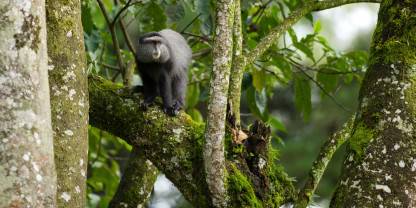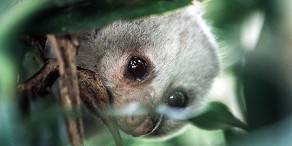Kakamega Forest teems with small mammals, but it is not primarily a wildlife destination. Primates likely to be seen by most visitors are , , and . A small population of the localized occurs in the nearby but separate Kisere Forest (though it is more easily seen in Saiwa Swamp National Park). live in the canopy, while , or might be glimpsed scurrying off in the undergrowth.
Wildlife Highlights
The forest transforms after sunset. Guided night walks, conducted by spotlight, are more than worthwhile. Some of the creatures you might encounter are , and . This is the only place in Kenya where giant might be seen in flight. Rare sightings of the sloth-like and bizarre have been recorded, and a real Kakamega special is the giant otter shrew. There are lots of interesting insects as well, including the supersized .
Best Time for Wildlife Viewing
Kakamega Forest can be visited throughout the year, as wildlife viewing is not particularly seasonal. However, heavy rain can disrupt hiking and other activities in the forest. Rain is a possibility at any time of year, but it is most likely in April, May and August. The driest months are from December to February, which are the ideal time to visit.
















 View Photos (17)
View Photos (17)
 +17
Photos
+17
Photos